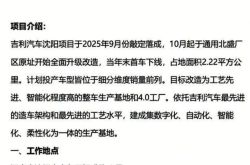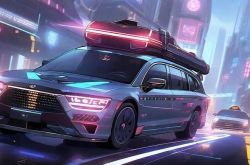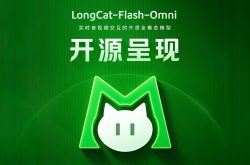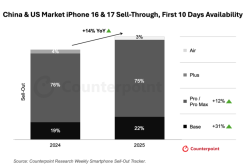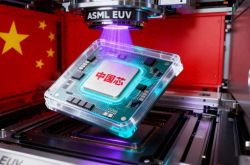Who Will Ultimately Prevail in the Robotaxi Race?
![]() 04/21 2025
04/21 2025
![]() 572
572
Preface: Disregarding economic and other external factors, the verification of technical safety will significantly propel the relaxation of regulatory policies.
During the 15th Five-Year Plan period (2026-2030), intelligent connected vehicles and autonomous driving technology are anticipated to become more seamlessly integrated with the enhancement of the comprehensive transportation system and infrastructure development.
This integration will expedite the alignment of L4 autonomous driving technology with smart transportation and city planning initiatives.
While the interfaces between technical modules must be translated into human-understandable formats, complete gradient transfer remains elusive.
The advancement of high-level autonomous driving technology encounters notable boundary effects, which to some degree constrain the extensive deployment of Robotaxi services.
Author | Fang Wensan Image Source | Network
The Robotaxi Industry: A Highly Competitive Landscape
Companies are vigorously expanding their market presence and competing for additional testing grounds and operating licenses. The hierarchy based on fleet size and operational mileage is becoming increasingly distinct.
In this fiercely competitive environment, the influence of market demand and technical challenges is progressively intensifying.
Currently, Luobo Kuaipao firmly holds the top spot, leveraging its early mover advantage in commercialization.
As part of Baidu, Luobo Kuaipao has swiftly emerged with its "low price + scenario coverage" strategy.
In 2024, the daily average order volume of its thousand self-driving taxis deployed in Wuhan surpassed 20 orders, disrupting the traditional ride-hailing market with a mere 4 yuan per 6 kilometers.
Technologically, Luobo Kuaipao has reduced the accident rate to one-fourteenth that of human drivers and achieved seamless operation on urban roads and highways through its "single-car intelligence + vehicle-road coordination" solution.
As a pioneer in autonomous driving, Baidu began laying the groundwork for related businesses in 2013.
In terms of operational vehicles, Luobo Kuaipao boasts over 1,500 vehicles, accounting for more than a third of the national total, with business coverage spanning 12 cities nationwide.
The second tier comprises numerous enterprises, with their layout primarily concentrated in 2016-2017, and their presence in China generally ranging from 2 to 6 cities.
However, Auto X holds a slight edge in the total number of operational vehicles, with over 300 vehicles nationwide, while WeRide, Pony.ai, and Didi each have roughly 200 to 300 vehicles.
As a global leader in the Robotaxi field, Pony.ai has successfully launched commercial operations of fully driverless vehicles in key areas such as Qianhai, Shenzhen, and Yizhuang, Beijing.
Its technological edge lies in the L4 autonomous driving system based on the "world model," capable of making high-precision decisions in complex urban settings.
As of March 2025, Pony.ai has accumulated nearly 40 million kilometers of road test mileage, with fully driverless mileage accounting for 10% of the total.
Through collaborations with renowned automakers like Toyota and BAIC, Pony.ai aims to expand its Robotaxi fleet to thousands of vehicles by 2025 and reach tens of thousands within the next three years.
The third tier primarily includes two travel platforms, T3 and Ruqi. These platforms conduct their Robotaxi business through partnerships with OEMs and autonomous driving companies.
For instance, T3 has established deep strategic alliances with Qingzhou Zhihang and Idriverplus, facilitating the operation of their Robotaxi products as a platform provider.
On the other hand, Ruqi maintains a close cooperative relationship with GAC Group, one of its cornerstone investors. The two parties jointly drive the model design and development, pre-installation mass production, and commercial operation of Robotaxi services.
Achieving Break-even: The Next Stage's Common Goal
Last November, Luobo Kuaipao obtained the first pilot license for autonomous vehicles in Hong Kong, China, marking the region as the first to issue a test license for right-hand drive and left-side driving autonomous vehicles.
This milestone signifies Luobo Kuaipao's official foray into global business expansion, with Hong Kong clearly emerging as the frontier of its global strategy.
According to Baidu's latest fourth-quarter financial report, Luobo Kuaipao provided over 1.1 million autonomous driving orders in the fourth quarter of 2024, marking a 36% year-on-year increase.
As of January 2025, Luobo Kuaipao has served over 9 million autonomous driving travel orders to the public. Since February 2025, Luobo Kuaipao has achieved 100% fully driverless operation nationwide.
Pony.ai is committed to cost reduction to achieve single-car profitability.
Currently, Pony.ai is collaborating with several mainstream automakers for mass production.
Reducing costs through mass production is pivotal to realizing the large-scale application of L4 autonomous driving technology.
For example, the next-generation L4 autonomous driving model developed in partnership with Toyota plans to deploy thousands of Bozhi 4X Robotaxi in China's tier-one cities between 2025 and 2026.
While WeRide has yet to disclose its detailed strategic plan for 2025, insights can be gleaned from previous quarters' financial reports.
From the revenue composition breakdown, WeRide's business is transitioning towards an asset-light model.
According to the third-quarter financial report of the previous year, product revenue accounted for 21.4%, while service revenue constituted a significant 78.6%.
In fact, WeRide has had a service-oriented ethos from its inception, pioneering commercial paid operation services for open-road autonomous taxis in China, becoming the world's first company to offer paid L4 Robotaxi services to the public.
Therefore, it may be more apt to view WeRide as a service company—one that sells travel services to end-users as its core business.
The Convergence of Vehicles, Roads, and Clouds: The Most Feasible Business Model
The fusion of multiple differentiated capabilities maximizes the commercial viability of Robotaxi implementation.
The golden triangle model fosters an organic union among autonomous driving technology companies providing technical solutions, automakers offering vehicle platforms and manufacturing capabilities, and travel/operation platforms managing online taxi-hailing services for Robotaxi.
This tripartite collaboration lays a solid foundation for commercialization across vehicles, technology, and application dimensions.
In 2024, the Q&A for the pilot work of the [integration of vehicles, roads, and clouds] for intelligent connected vehicles proposed: [Exploring and establishing a new business model for the investment, construction, and operation of the integration of vehicles, roads, and clouds.]
Clarify the pilot commercial operation entity for the [integration of vehicles, roads, and clouds] of intelligent connected vehicles and encourage the exploration of a joint investment and operation model involving multiple entities such as state-owned asset platforms, automakers, operators, and technology companies.
However, the involvement of state-owned asset platforms is not a common feature in the currently prevalent golden triangle model.
Given the pivotal role of local governments in the industry, it is anticipated that the participation of local urban investment companies will significantly enhance the model's integrity in the long run.
A joint venture established by multiple parties holds heavy assets like Robotaxi vehicles and operates local fleets. When the vehicle count stabilizes and generates consistent cash flow, local Robotaxi operations can be viewed as fixed-income projects, characterized by stable returns, low risks, and high liquidity.
Thus, in the current scenario where Robotaxi profitability is weak, the golden triangle model has emerged as the linchpin for early-stage commercialization.
In the middle and late stages of industrial development, the intervention of state-owned asset platforms to establish joint ventures and conduct regional operations in the form of similar fixed-income projects may evolve into a mutually beneficial business model with strong replicability.
Conclusion:
By 2024, China's intelligent connected vehicle industry is projected to grow to RMB 1,108.2 billion, marking a 34% year-on-year increase.
According to relevant forecasts, by 2030, the industry's scale is expected to exceed RMB 5 trillion, forming a trillion-level industrial chain.
This development trajectory will further propel the commercialization of smart cars and catalyze rapid industry growth.
Many autonomous driving companies and research institutions anticipate that the autonomous driving sector will enter a profitable phase in 2025.
Perhaps in the near future, autonomous driving technology may indeed become a profitable venture for enterprises.
While mentioning "profit" in the context of technological advancement may seem unsophisticated, it is indeed crucial for a nascent technology.
Historical precedents indicate that the ultimate winners are often not the most radical innovators but the pragmatic ones who strike a balance between technology and commercial returns. Technology, ecosystem, and commercialization capabilities are all indispensable.
Part of the reference materials: Qi Guai Le: "The Great Battle of Robotaxi", Auto Observer: "Tesla Gets a License, Accelerating the Global Competition in Robotaxi", Toubao: "Robotaxi is Gradually Being Implemented, Autonomous Driving Travel is Becoming Increasingly Close", iResearch: "2024 China Robotaxi Commercialization Trend Research Report", Xiaguangshe: "The Global Robotaxi Competition Has Begun, Chinese Players Need to Speed Up", Dianchetong: "Robotaxi Competes for 2025: Baidu Leads the Battle Among Three Powers, Second-tier Players Engage in Chaotic Fight"

